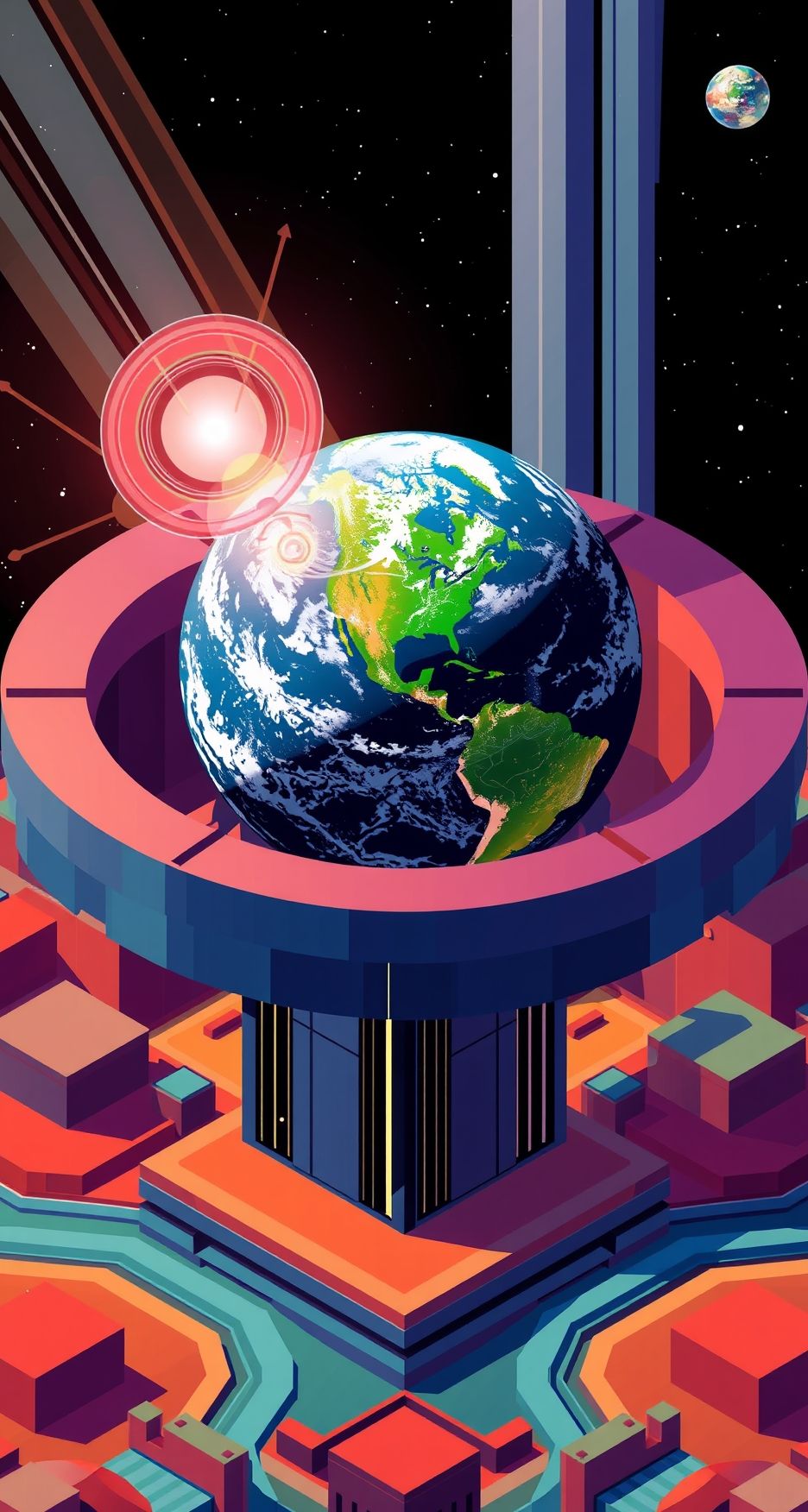Irobot Posts Sharpest Revenue Decline Yet As Sales Plummet 246 In Q3 2025
iRobot Corp., the manufacturer of popular Roomba robot vacuums, has reported its third-quarter …
28. June 2025

Imagine a world where humanity can easily access space without the need for complex rockets, but instead, relies on a simple yet innovative solution – the space elevator. This concept has been a staple of science fiction for decades, but what if our planet’s rotation were just a fraction of its current speed? What would be the implications, and more importantly, could this altered reality lead to the development of a working space elevator?
A day is not simply a measure of time between two consecutive local noons; it also accounts for the Earth’s orbit around the sun. The rotation of our planet on its axis and its orbital path around the sun are intricately linked. When we say a day is 24 hours, we’re actually referring to the time elapsed between two consecutive solar noons, not the complete rotation of the Earth.
The distinction between solar days and sidereal days is crucial in understanding the intricacies of our planet’s movement. A solar day is the time it takes for the Earth to rotate once on its axis, which corresponds to 24 hours. On the other hand, a sidereal day is the time it takes for the Earth to rotate once relative to the fixed stars, which is approximately 23 hours and 56 minutes.
The concept of space elevators may seem like science fiction, but exploring counterfactual scenarios can provide valuable insights into how our reality works. By altering the speed of Earth’s rotation, we can gain a better understanding of the fundamental forces that govern our planet’s behavior.
A space elevator is a tether from Earth to an orbiting space station in geosynchronous orbit. The idea is simple yet innovative: a cable-climbing car would ride up and down the length of the tether, allowing for easy access to space without the need for complex rockets. This concept has been explored extensively in science fiction, but what if our altered reality provided the necessary conditions for its realization?
Theoretical physicist and futurist Peter Diamandis has proposed that a space elevator could be built using materials like carbon nanotubes or diamond-based fibers. These materials possess exceptional strength-to-weight ratios, making them ideal for withstanding the stresses of supporting an enormous payload in Earth’s gravitational field.
However, building a space elevator would require significant technological advancements in areas like materials science, robotics, and energy storage. The development of such technology is an ongoing effort, with researchers exploring innovative solutions to overcome the numerous challenges associated with constructing a space elevator.
One of the most significant hurdles facing space elevator development is maintaining stability and control over the tether as it extends from Earth to geosynchronous orbit. The cable would need to be incredibly long – approximately 36,000 kilometers – to reach the desired orbit. Any perturbations or vibrations could cause catastrophic failure.
Despite these challenges, researchers continue to explore innovative solutions, such as using advanced materials and smart fiber technologies to maintain stability. Additionally, advancements in robotics and artificial intelligence could enable more efficient and precise control systems for the space elevator.
As we consider the possibility of a working space elevator, it’s essential to think about the broader implications on our understanding of the world around us. By embracing the absurdity of thinking outside the box, we can unlock new ideas and perspectives that might lead to breakthroughs in fields like space exploration, materials science, or even timekeeping.
The possibility of a working space elevator may seem far-fetched, but it highlights the incredible potential of human ingenuity when we dare to challenge our assumptions about what is possible. As we gaze up at the night sky, it’s essential to remember that the most profound discoveries often lie just beyond the edge of our imagination.